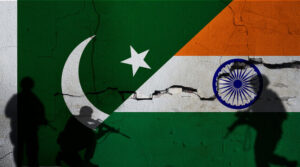War has existed throughout human history, but today, the way it’s fought is undergoing a dramatic transformation. Advances in technology have not only changed military strategies but have also introduced ethical, political, and humanitarian debates. From drones to cyber warfare, modern conflict looks very different than it did even a few decades ago.
1. The Rise of Drone Warfare
Unmanned aerial vehicles (UAVs), commonly known as drones, are among the most notable technological changes in modern combat. They allow military forces to conduct surveillance and targeted strikes without risking the lives of pilots. While drones can reduce battlefield casualties on one side, they also raise questions about accountability and civilian safety.
2. Cyber Warfare: Battles in the Digital Space
Cyber warfare is a new frontier in conflict. Instead of bombs and bullets, state and non-state actors use malware, ransomware, and digital espionage to disrupt power grids, financial systems, and government communications. The 2010 Stuxnet virus, which targeted Iran’s nuclear program, was one of the first high-profile examples of cyber conflict.
3. Artificial Intelligence and Autonomous Systems
AI is being used in military applications ranging from target recognition to logistics management. Autonomous drones, robotic vehicles, and smart defense systems are already in development or active service. While these innovations can enhance precision and safety, they raise major concerns about ethics, decision-making, and human oversight in warfare.
4. Satellite and Space-Based Technologies
Modern armies rely heavily on satellites for GPS, surveillance, and communication. This dependence makes space infrastructure a critical part of national defense — and a potential target. Some countries are developing anti-satellite weapons, leading to debates over the militarization of space.
5. The Role of Information and Misinformation
Information itself has become a weapon. In times of war, digital platforms are often used to influence public opinion, spread propaganda, or disrupt the morale of enemy populations. This “information warfare” can be as impactful as physical weapons, especially when amplified by social media and AI-generated content.
Technology vs. Humanity: A Delicate Balance
While technology has made warfare more precise and less reliant on large-scale troop deployment, it also detaches decision-makers from the battlefield. This distance can reduce empathy and increase the likelihood of unintended consequences.
International organizations and policymakers are now calling for clear rules and accountability around emerging military technologies, including AI and autonomous weapons.
Conclusion
War is evolving, and so is the technology that drives it. While innovation can reduce some risks and increase defense capabilities, it also introduces complex challenges that require global cooperation and ethical foresight. Understanding the role of modern technology in conflict is essential—not to glorify war, but to navigate it wisely and strive for peace.









